|
On Saturday the 16th
I had had a great day, but I had missed two of my targets: Townsend's
Solitaire and Turkey Vulture. That evening I read a message from
a fellow named Mark who had seen three Townsend's Solitaires out
at the UBC Botanical Gardens, feeding on a berry tree. I hadn't
been to the gardens since the previous summer, so I thought that
on Sunday I'd head out that way.
After entering the
gardens, I crossed under the road and went towards the northeast
corner, which is where the solitaires had been reported. Towards
that corner, I reached a little cul-de-sac consisting of a low
spot with paths on little artificial hills all around. I scouted
these hills for the solitaires with no luck. Following one of
the paths around, I noticed a small bird moving really fast a
ways to my south. It was a hummer, and it made a sharp turn, as
hummers will do, and landed on the top of a tree. I pulled out
my camera and got a few shots, but the sky was really bright and
I thought that all I'd get would be a silhouette. I still hadn't
identified what kind of hummer I had. My binoculars didn't help
much, again because of the bright sky.
I moved in a bit closer
and thought I saw a flash of green. I tentatively thought that
I had an Anna's Hummingbird, but I wasn't sure until I saw the
photos at home. With the help of Photoshop, I'm now certain that
it was a male Anna's. Anna's are relatively abundant here, depending
on what habitat you're in. Since I haven't been hanging out in
the right places, this Anna's was a lifer for me.
|
|
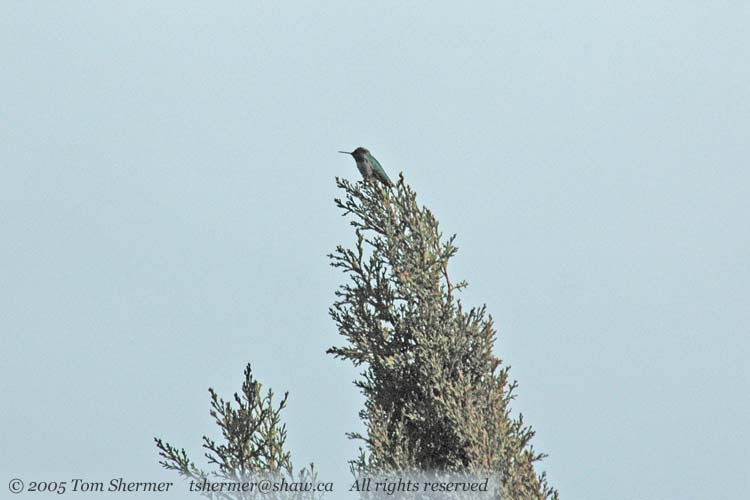 |
| The tree
he was on was fairly tall, and so I wasn't able to get much detail
on him. Here'sthe best I could do; one can see the white line from
behind his eye back to his shoulder, and the green on his wings,
but not much detail on the front of his face. |
|
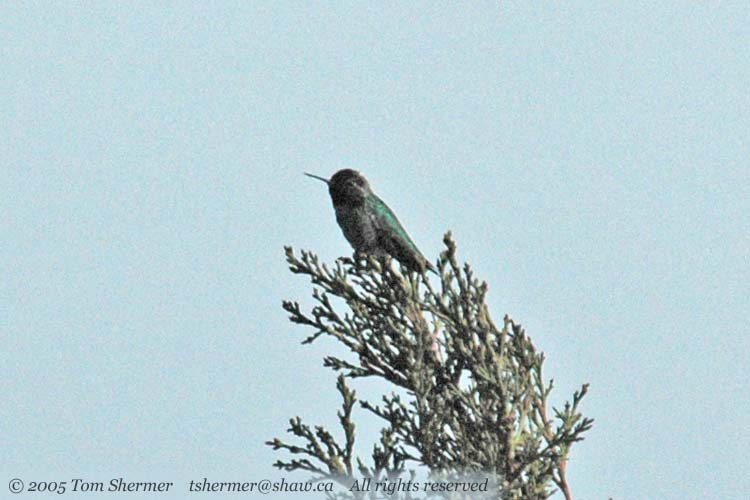 |
|
Well, the hummer didn't
stay put long, and so then I was back on the trail of the solitaires.
I searched he hills again without any luck.
While I was searching,
though, I was also looking at the plants. I was at a botanical
garden, after all. It was early in the season and not much was
well-developed. However, I spotted a favorite plant of mine there.
I had and photographed a lot of this plant last time I was at
the gardens, but I had never figured out what it was. This time
I was sure to check; being a botanical garden, there are signs
saying what most of the plants are. It turns out that my plant
is a Euphorbia characias.
|
|
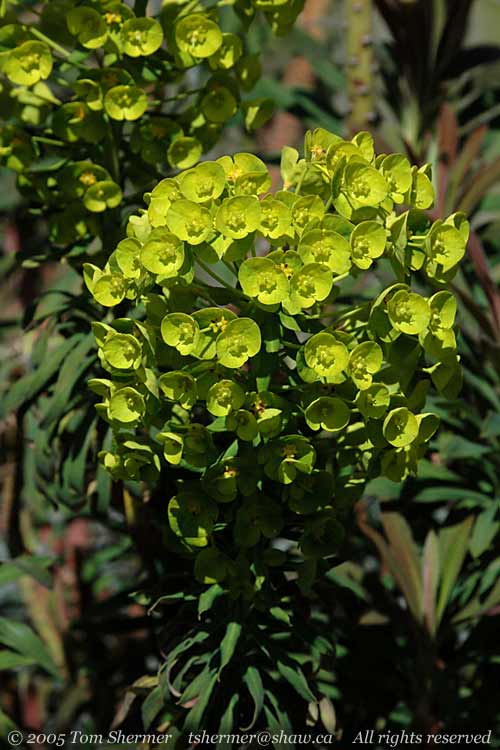 |
|
The thing I like about
E. characias is the way the little flowerlets branch.
Each of those bright green disks develops two stalks in the middle
of it. About a centimeter or so later, each stalk ends at a bud
that becomes a new disk. Each of those two disks will develop
two stalks, etc., continuing like this as the plant grows.
My fellow geeks out
there will note that I've just described what we call a "binary
tree." It's a bit unusual, because plants don't often branch
neatly and regularly into two equal sub-branches. Three or five
are much more common branching numbers.
Another nice flower
I found on the hills was this stately white Spring Starflower
(Ipheion uniflorum). Ipheion uniflorum "Alberto
Castillo," to be exact. It hails from Argentina.
|
|
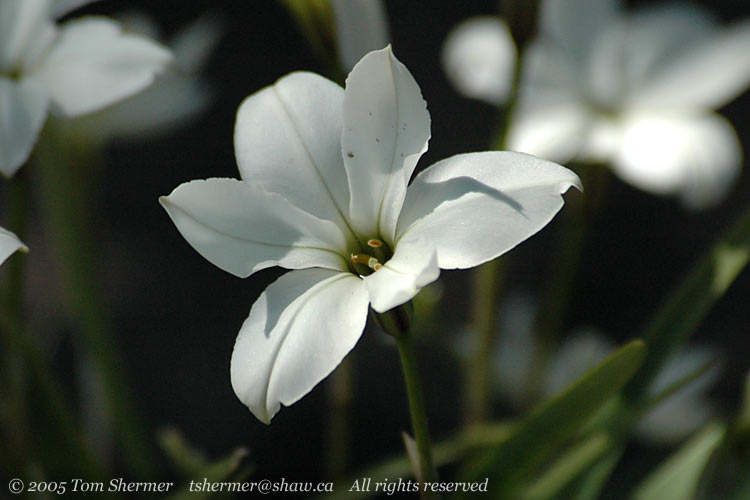 |
|
I eventually found
a path to the far northeast corner of the gardens, going back
behind the landscaped hills, where there's a building and some
planters. Near there was a tree with berries (elderberries?) that
looked bigger and riper than any of the others I'd seen anywhere
in the garden. I figured that this must be the tree where the
solitaires had been reported, and I settled down to watch.
I saw a Song Sparrow
come by, some Spotted Towhees and Dark-eyed Juncos on the ground,
and a Fox Sparrow doing a maneuver called the double-scratch.
After about ten minutes, a robin-sized bird appeared, and it was
all grey...I'd gotten my lifer Townsend's Solitaire.
|
|
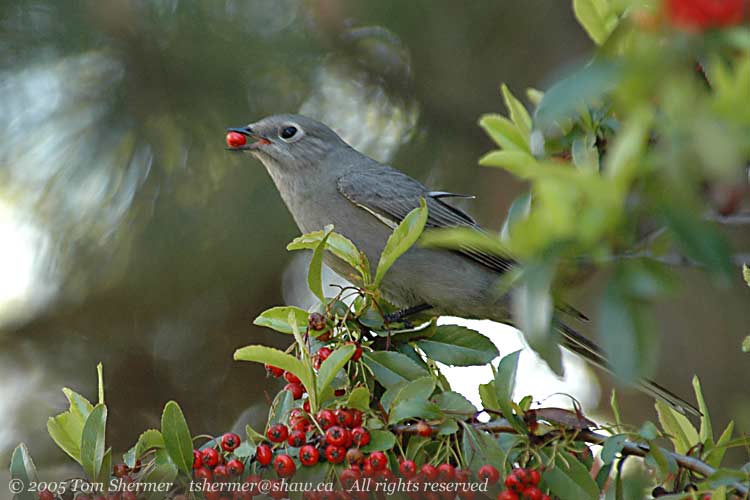 |
| Over the
next half-hour or so, I caught Solitaires on three or four different
perches, including a couple in direct sunlight. |
|
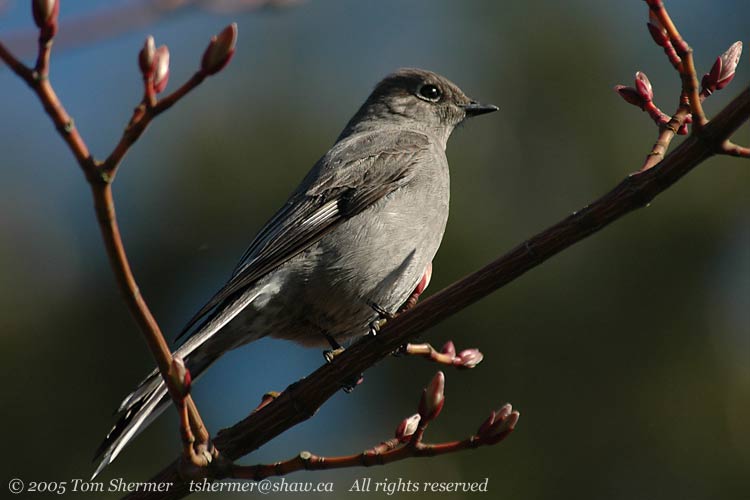 |
|
I only ended up seeing
two solitaires at any one time, not the three that Mark had reported.
I may have seen them all, but only two at a time. For a mainly
grey bird, they were pretty striking.
|
|
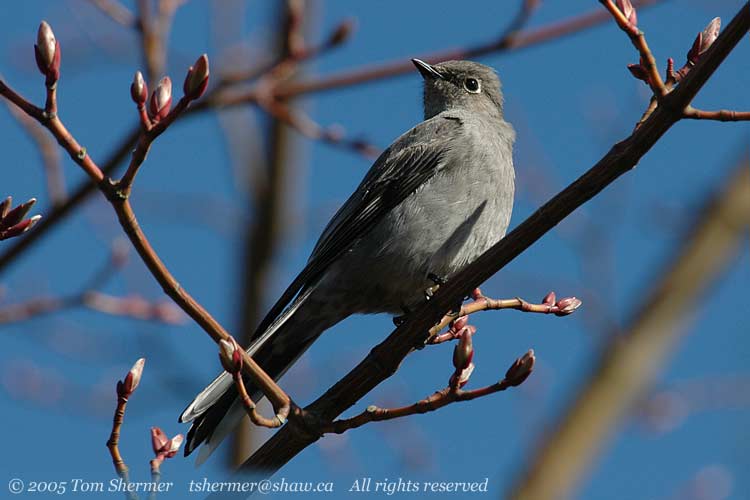 |
| I took the
telephoto lens off of my camera and spent most of the rest of the
afternoon with my macro lens, taking photos of flowers and plants.
Here's a pretty tulip called Baker's tulip (Tulipa bakeri),
for all the Bakers in the audience. |
|
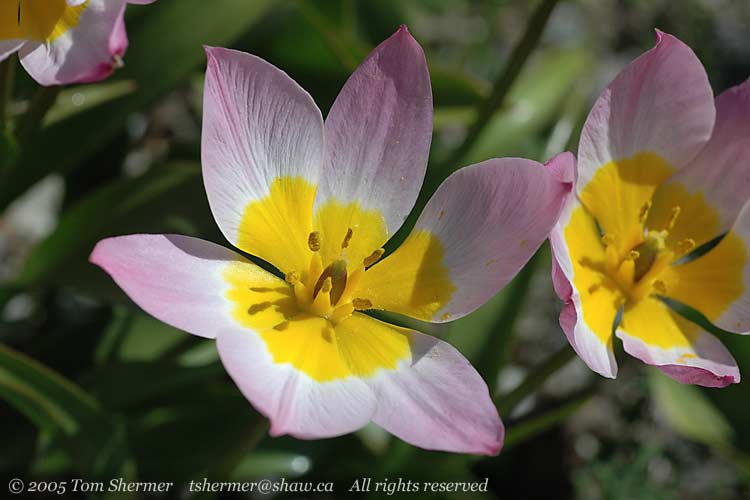 |
|
The following little
beauty is Narcissus bulbocodium. For those of you paying
attention, yes, that means it is a daffodil. N. bulbocodium
is in the horticulturist's daffodil Division 10, which is in fact
named the bulbocodium daffodils. Division 10 daffs have one flower
to each stem, and perinath petals that are insignificant compared
with the cup.
|
|
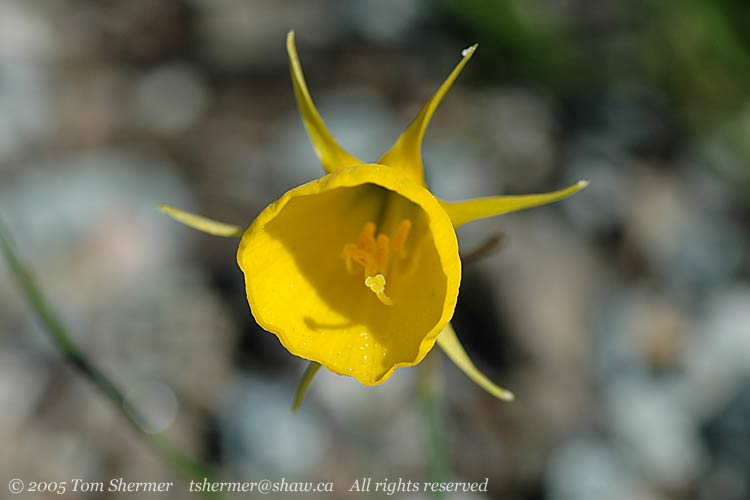 |
| Next I found
these little blue flowers, but I never can remember what they're
called. |
|
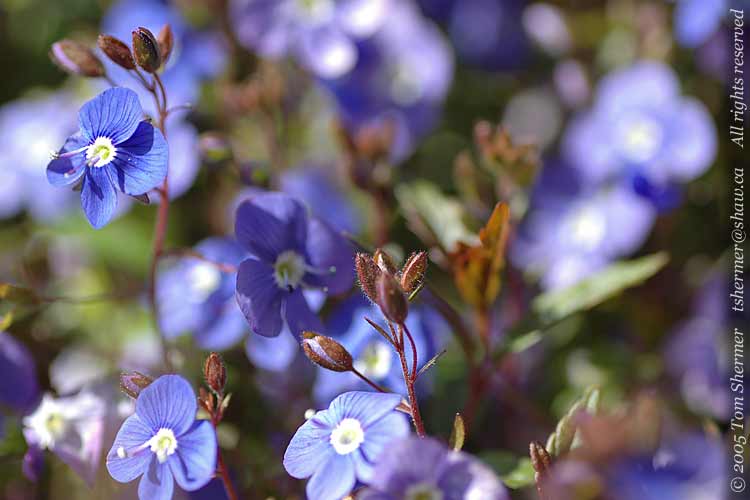 |
|
In one section of the
gardens was a little glass-roofed box where they were raising
a bunch of succulents; mainly ones from South Africa as far as
I can tell.
I got decent photos
of three of them. The first was this fellow, a Cotyledon orbiculata,
sometimes called Pig's Ear. There are many variants of C. orbiculata;
this is the "oblonga" variant.
|
|
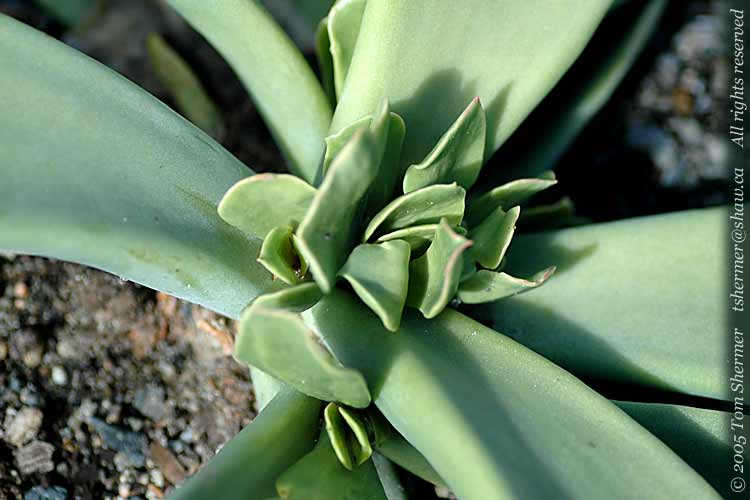 |
| The second
succulent I got
was Reitz' Aloe, with the easy-to-remember scientific name of Aloe
Reitzii. (Every time I see the scientific name, I hear Satchmo
singin' "Hello, Dolly." ) |
|
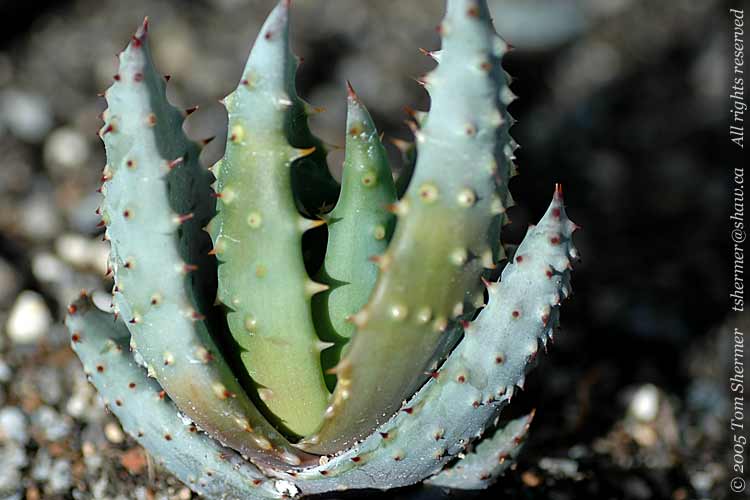 |
| The third
neat thing in the box was a bunch of Iceplant, Delosperma basuticum.
They were in bloom, and the flowers were hiding their succulent
foliage. |
|
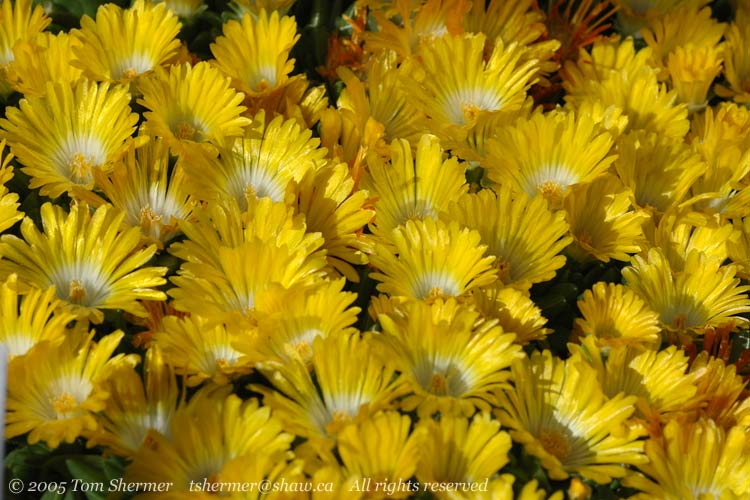 |
|
I wandered around through
the part of the gardens devoted to native B.C. plants, but didn't
see much to photograph; it was mainly in the shade and nothing
much was in bloom.
I then went by an arbor,
and noticed a bunch of house finches on the vines that covered
it. I reattached my telephoto lens and was taking photos of some
of them when I noticed this particular pair. These two are engaged
in a courtship ritual. My Sibley Guide to Bird Life and Behavior
says this about finches: "During courtship, females solicit
food from their prospective mates by crouching, fluttering their
wings, . . .
|
|
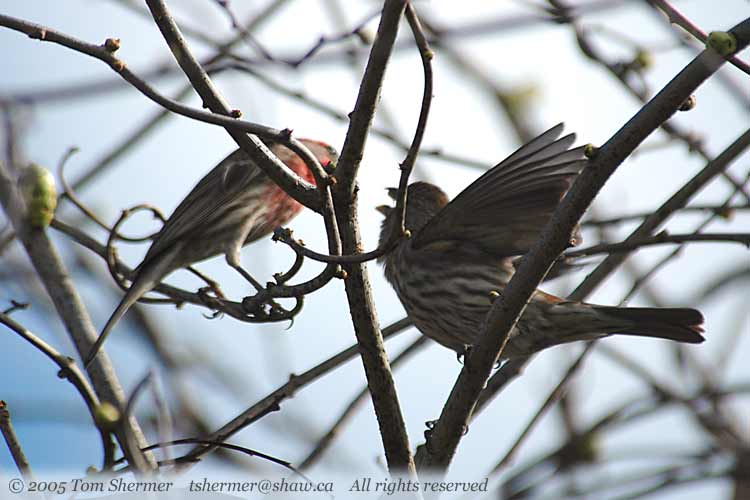 |
| ".
. . and giving begging calls. |
|
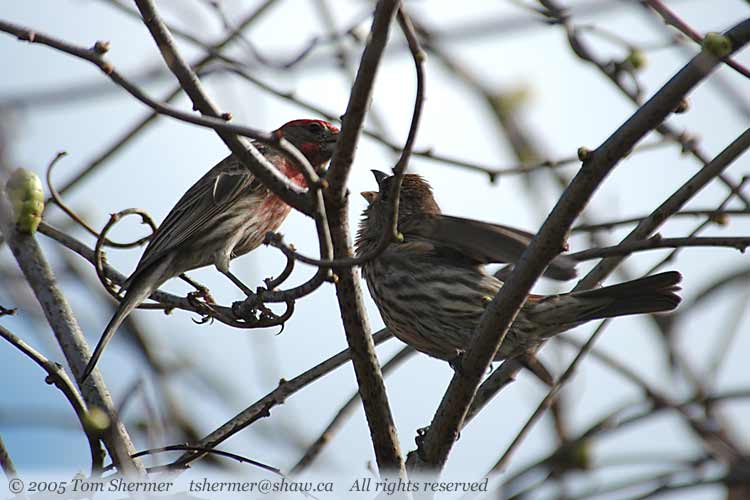 |
| "Males
respond with either mock feeding or by actually regurgitating food
into the female's mouth." |
|
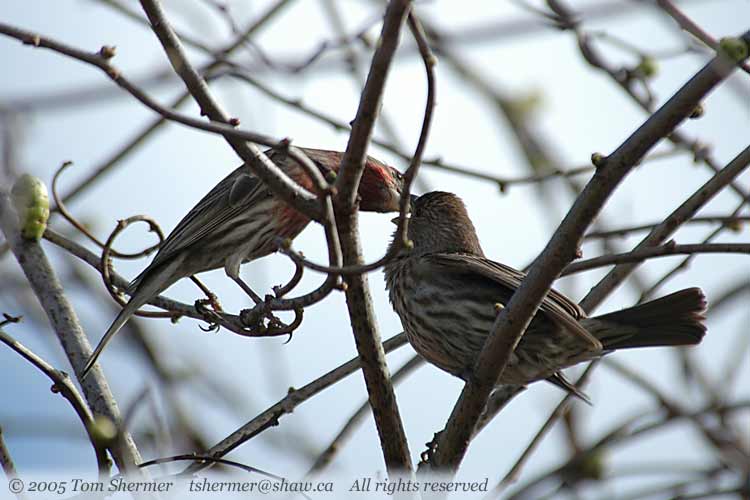 |
|
That was pretty neat
to watch. I got photos of them repeating the scene a couple of
times.
I went back to my macro
lens and homed in on some insects buzzing around some purple whatchamacallits.
I got photos of both bees and hover flies. This guy seems to be
a basic Honeybee.
|
|
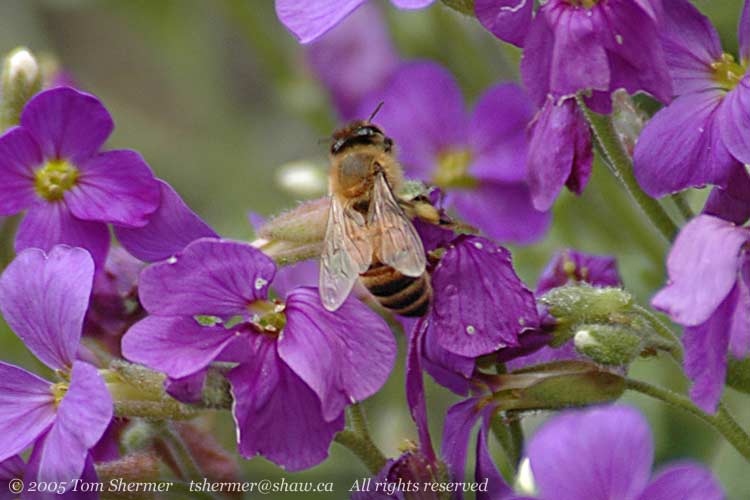 |
| The flattened
abdomen on this one gives it away as a hover fly. In this photo,
aptly enough, it's hovering. |
|
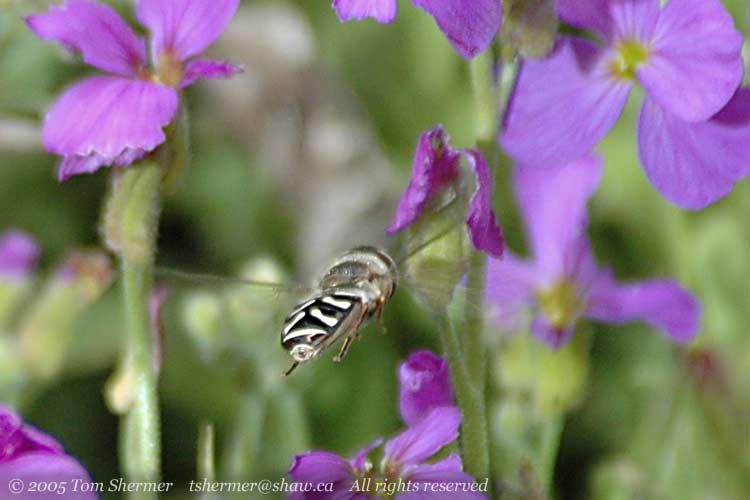 |
| But he did
park himself and pollinate. |
|
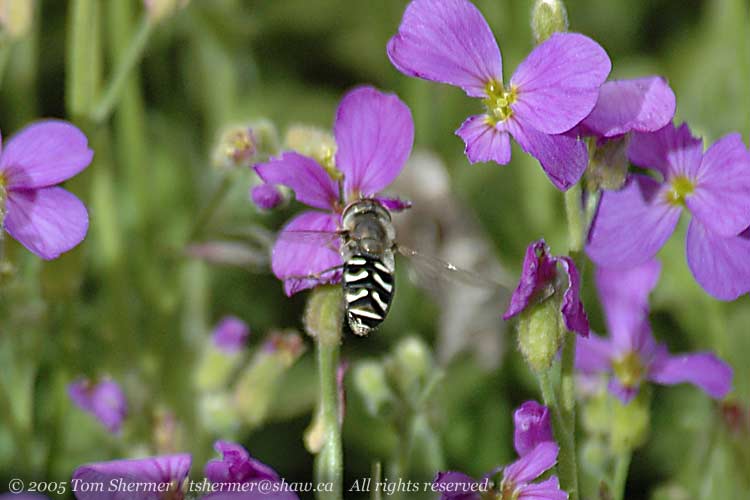 |
| My last
subject of the afternoon was this flower, Bergeria emeiensis.
It looked to be quite an attractive species but this particular
one seemed a little bit tattered. |
|
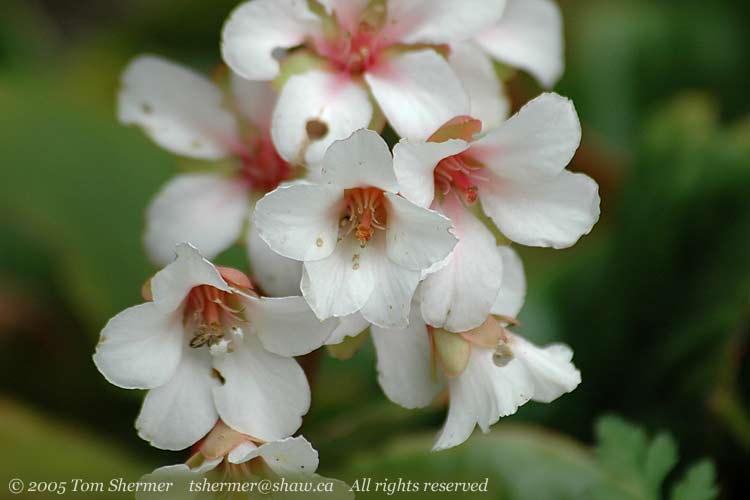 |
|
With that, I had finished
a tour of the east part of the gardens. I was fairly tired, partly
because of the long day before, so I called it a day without checking
out the west gardens.
I had only spent two
hours there, but gotten two lifers, a courtship ritual, and a
fine bunch of flowers. Not a bad use of time, at all.
With a deck of fifty-one,
Tom
|
|